
Emergency! is an American action-adventure medical drama television series jointly produced by Mark VII Limited and Universal Television. Debuting on NBC as a midseason replacement on January 15, 1972, replacing the two short-lived situation comedy series The Partners and The Good Life, it ran for a total of 122 episodes until May 28, 1977, with six additional two-hour television films during the next two years, 1978 and 1979.
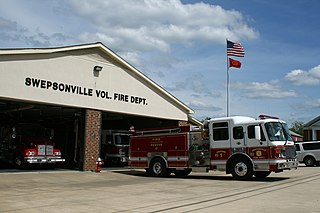
A volunteer fire department (VFD) is a fire department of volunteers who perform fire suppression and other related emergency services for a local jurisdiction. Volunteer and retained (on-call) firefighters are expected to be on call to respond to emergency calls for long periods of time, and are summoned to the fire station when their services are needed. They are also expected to attend other non-emergency duties as well.
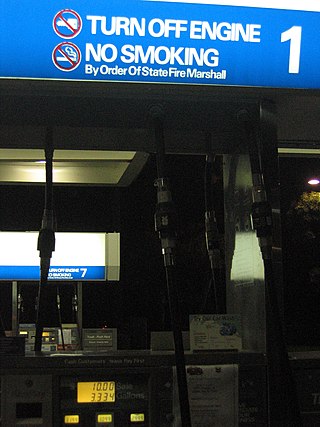
A fire marshal, in the United States and Canada, is often a member of a state, provincial or territorial government, but may be part of a building department or a separate department altogether. Fire marshals' duties vary but usually include fire code enforcement or investigating fires for origin and cause. Fire marshals may be sworn law enforcement officers and are often experienced firefighters. In larger cities with substantially developed fire departments the local fire departments are sometimes delegated some of the duties of the fire marshal.

A certified first responder is a person who has completed a course and received certification in providing pre-hospital care for medical emergencies. Certified individuals should have received much more instruction than someone who is trained in basic first aid and cardiopulmonary resuscitation (CPR) but they are not necessarily a substitute for more advanced emergency medical care rendered by emergency medical technicians and paramedics. First responders typically provide advanced first aid level care, CPR, and automated external defibrillator (AED) usage. The term "certified first responder" is not to be confused with "first responder", which is a generic term referring to the first medically trained responder to arrive on scene and medically trained telecommunication operators who provide pre-arrival medical instructions as trained Emergency Medical Dispatchers (EMD). Many police officers and firefighters are required to receive training as certified first responders. Advanced medical care is typically provided by EMS, although some police officers and firefighters also train to become emergency medical technicians or paramedics.

Insignias and badges of the United States Navy are military badges issued by the United States Department of the Navy to naval service members who achieve certain qualifications and accomplishments while serving on both active and reserve duty in the United States Navy. Most naval aviation insignia are also permitted for wear on uniforms of the United States Marine Corps.
Firefighting jargon includes a diverse lexicon of both common and idiosyncratic terms. One problem that exists in trying to create a list such as this is that much of the terminology used by a particular department is specifically defined in their particular standing operating procedures, such that two departments may have completely different terms for the same thing. For example, depending on whom one asks, a safety team may be referred to as a standby, a RIT or RIG or RIC, or a FAST. Furthermore, a department may change a definition within its SOP, such that one year it may be RIT, and the next RIG or RIC.
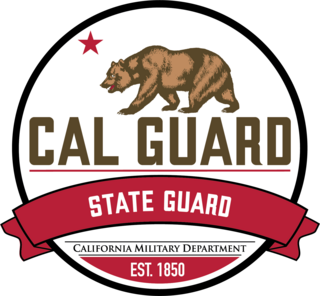
The California State Guard (CSG) is a military unit which provides assistance and training to the California National Guard (CNG) and is a military force of California. The CSG is a reserve force that supports the state missions and federal readiness of the Army and Air National Guard. CSG service members often come from all branches of the military and are citizens with essential skills. Many CSG service members are fully integrated with Army National Guard and Air National Guard units, and are full-time state active duty, though the California State Guard is not a part of the United States Armed Forces, unlike the National Guard.
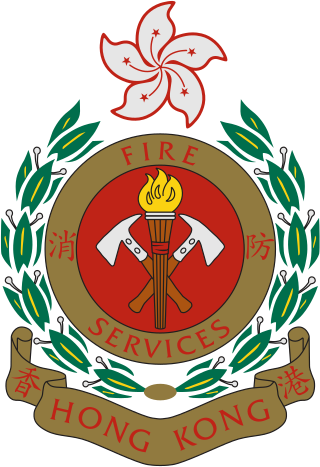
The Hong Kong Fire Services Department is an emergency service responsible for firefighting and rescue on land and sea. It also provides an emergency ambulance service for the sick and the injured and gives fire protection advice to the public. It is under the Secretary for Security who heads the Security Bureau.
Junior firefighting is a youth activity mostly organized by fire departments. It serves as a means of personal development for the youths, as well as a recruiting pool for the fire departments.

The Fire and Rescue Department of Malaysia, commonly known as Bomba, is a federal agency of Malaysia responsible for firefighting and technical rescue. Bomba is a Malay word derived from the Portuguese bombeiros which means 'firefighters'.
The San Diego Fire-Rescue Department (SDFD) is an all-risk, all-hazards fire department, providing fire protection and emergency medical services to the city of San Diego, California, United States. The San Diego Fire-Rescue Department is the second-largest municipal fire department in the state of California, after Los Angeles and responds to nearly 162,000 calls per year. The San Diego Fire-Rescue Department covers 343 square miles of service area including 17 miles of coastline, with responsibility extending 3 miles offshore.
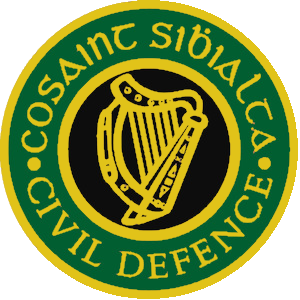
Civil Defence Ireland is the national civil defence organisation of Ireland. It is a statutory agency of the Irish Department of Defence and is administered by local authorities. It was established in 1951 in response to the threat of nuclear disaster posed by the atomic bomb following World War II. Today it is an emergency response and rescue agency whose purpose is to provide aid, assistance and relief in times of emergency or natural disaster. It may also support primary emergency response agencies namely the Garda Síochána, HSE National Ambulance Service, and local authority fire services when requested. Civil Defence Ireland consists almost entirely of volunteers, numbering 2500 as of May 2023.

The Queensland Fire and Emergency Services (QFES) is the primary provider of fire and emergency services in Queensland, Australia. The QFES was established in 2013, adopting an "all hazards" approach to emergency management.
The U.S. Department of Defense employs civilians who are stationed at military bases to work as firefighters. These personnel have their own uniforms and equipment, but are not considered to be members of a military unit. They are responsible for firefighting, but they may also receive aid from military units. Each U.S. Defense Department firefighter has his or her own uniform, usually a dark blue suit with a badge and a shoulder patch indicating his or her status. They wear dark blue pants per United States Army regulation, but shirts can be dark blue, light blue, or white depending on the person's rank. This only applies to this organization, and not the Department of Defense.

Firefighting in the United States dates back to the earliest European colonies in the Americas. Early firefighters were simply community members who would respond to neighborhood fires with buckets. The first dedicated volunteer fire brigade was established in 1736 in Philadelphia. These volunteer companies were often paid by insurance companies in return for protecting their clients.

The Tokyo Fire Department (TFD), Founded in 1948, is the fire department of Tokyo Metropolis, Japan. The TFD is the largest urban fire department in the world with a total staff of 18,408.

The Vigili del Fuoco is Italy's institutional agency for fire and rescue service. It is part of the Ministry of Interior's Dipartimento dei Vigili del Fuoco, del Soccorso Pubblico e della Difesa Civile. The Corps' task is to provide safety for people, animals, and property, and to give technical assistance to industries, as well as providing fire prevention advice. It also ensures public safety in terrorist emergencies such as chemical, bacteriological, radiological, and nuclear attacks.

The Baltimore City Fire Department (BCFD) provides fire protection and emergency medical services to the city of Baltimore, Maryland, United States. Founded in 1797 and established in 1859, the Baltimore City Fire Department covers an area of 81 square miles (210 km2) of land and 11 square miles (28 km2) of water, with a resident population of over 640,000 and a daytime population of over 1,000,000. The BCFD responds to approximately 235,000 emergency calls annually. There are two International Association of Fire Fighters (IAFF) locals; IAFF 734 for firefighters and IAFF 964 for officers.
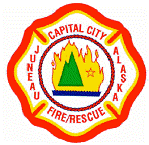
Capital City Fire/Rescue (CCFR) provides fire suppression and emergency medical services to the city of Juneau, Alaska, United States.
















